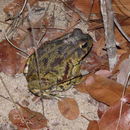en
names in breadcrumbs


This species can be found in the Highveld grasslands ecoregion in southern Africa. This ecoregion now provides the last remaining stronghold of a number of grassland species that have suffered major reductions in abundance in the grassland biome, and which are consequently threatened with extinction (e.g. the Blue Crane (Anthropoides paradisea). There is a relatively biodiverse vertebrate fauna, with 608 taxa recorded.
The dominant vegetation comprises grasses, with geophytes and herbs also being well represented. Dominant and diagnostic grass species are Thatching Grass (Hyparrhenia hirta) and Catstail Dropseed Grass (Sporobolus pyramidalis). Non-grassy forbs include False Paperbark Thorn (Acacia sieberiana), Rhus vulgaris, Selago densiflora, Spermacoce natalensis, Aandblom (Kohautia cynanchica), and Phyllanthus glaucophyllus. Relatively high precipitation levels sustain the grasslands during the austral summer, with the mean annual range between 400 to 900 millimetres.
The Highveld grassland ecoregion can be divided into three habitat types: (1) Kalahari/Karoo-highveld transition zone; (2) sweet grasslands; and (3) sour grasslands. In the western half of the ecoregion, a gradual transition occurs from the Karoo/Kalahari-highveld transition zone to the grassland habitats of the Highveld. Shrubs and trees grow in the transition zone, although grasses still dominate this zone.
Bird species richness is relatively high within this ecoregion. However, Botha’s Lark (Spizocorys fringillaris) is the only bird species strictly endemic to the ecoregion, where it inhabits heavily grazed grassland. An additional six avian species are near-endemics including White-winged Flufftail (Sarothrura ayresii), Blue Korhaan (Eupodotis caerulescens), White-bellied Bustard (Eupodotis senegalensis), Rudd’s lark (Heteromirafra ruddi), the Near Threatened Melodious lark (Mirafra cheniana), Buff-streaked chat (Saxicola bifasciatus), and the Vulnerable Yellow-breasted pipit (Anthus chloris).
This ecoregion contains a higher number of mammals, although only the Orange Mouse (Mus orangiae) is restricted to the ecoregion, and the Rough-haired Golden Mole (Chrysospalax villosa) is near-endemic. The ecoregion also supports populations of several large mammal species, some of which are rare in southern Africa (Stuart and Stuart 1995). Among these are the Vulnerable Cheetah (Acinonyx jubatus), Brown Hyena (Hyaena brunnea), African Civet Cat (Civettictis civetta), Leopard (Panthera pardus), Sable Antelope (Hippotragus niger), Ground Pangolin (Manis temminckii), Honey Badger (Mellivora capensis), African Striped Weasel (Poecilogale albinucha), Aardwolf (Proteles cristatus), Oribi (Ourebia ourebi), and Hartmann's Mountain Zebra (Equus zebra hartmannae). Herds of large mammals, including Black Wildebeest (Connochaetes gnou) and White Rhinoceros (Ceratotherium simum), previously occurred in the Highveld grasslands, but were extirpated by the local human population. Other notable mammalian taxa occurring in the ecoregion include the Vulnerable Juliana's golden mole (Neamblysomus julianae).
Relatively few reptile species occur within the Highveld grasslands, mainly due to its cool climate. However, the ecoregion supports some of Africa’s most characteristic reptile species, including Nile Crocodile (Crocodylus niloticus), African Rock-python (Python sebae), Nile Monitor (Varanus niloticus) and Veld Monitor (Varanus albigularis albigularis). There are also two strictly endemic reptiles: Giant Girdled Lizard (Cordylus giganteus) and Agama aculeata distanti (Branch 1998). Several additional reptile species are near-endemics, including Drakensberg Rock gecko (Afroedura niravia), the Vulnerable Giant Girdled Lizard (Cordylus giganteus), and Breyer's Whip Lizard (Tetradactylus breyeri) (Branch 1998).
Twenty-nine amphibians occur within the ecoregion but none are endemic (Passmore and Carruthers 1995). Example anuran species in the Highveld grasslands are the Kimberley Toad (Amietophrynus poweri), African Dwarf Toad (Poyntonophrynus vertebralis), who breeds in temporary shallow pans, freshwater pools or depressions containing rainwater; the Red Toad (Schismaderma carens); Cape River Frog (Amietia fuscigula). endemic of the high slopes of the Drakensberg Mountains and Lesotho Highlands; South African Snake-necked Frog (Phrynomantis bifasciatus), typically found under loose sand below large rocks or boulders.
Sclerophrys poweri is a species of toad in the family Bufonidae. It is found in extreme southern Angola, northern Namibia, Botswana, southward to central South Africa,[1] and Zambia.[2] The specific name poweri honours John Hyacinth Power, Irish-born director of the McGregor Museum (Kimberley, South Africa) who collected amphibians as well as reptiles and plants.[3]
Sclerophrys poweri inhabits open savanna, wooded savanna, thornveldt, river valleys, and agricultural areas. Breeding takes place in temporary water (vleis, marshes, dams, or pans), and sometimes artificial pools. It is a common and often abundant species that is not facing any significant threats and that is present in many protected areas.[1]
Sclerophrys poweri is a species of toad in the family Bufonidae. It is found in extreme southern Angola, northern Namibia, Botswana, southward to central South Africa, and Zambia. The specific name poweri honours John Hyacinth Power, Irish-born director of the McGregor Museum (Kimberley, South Africa) who collected amphibians as well as reptiles and plants.
Sclerophrys poweri inhabits open savanna, wooded savanna, thornveldt, river valleys, and agricultural areas. Breeding takes place in temporary water (vleis, marshes, dams, or pans), and sometimes artificial pools. It is a common and often abundant species that is not facing any significant threats and that is present in many protected areas.